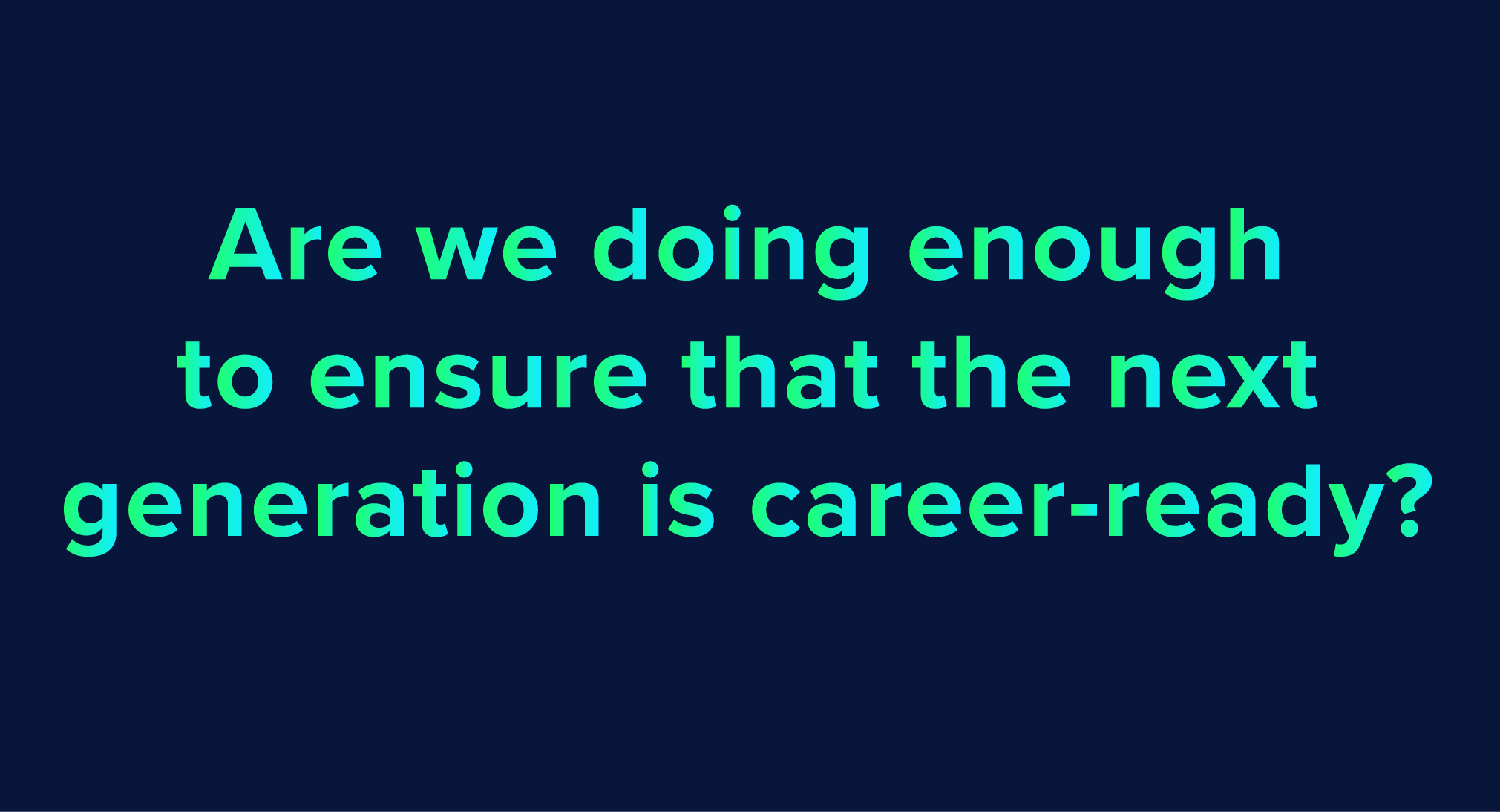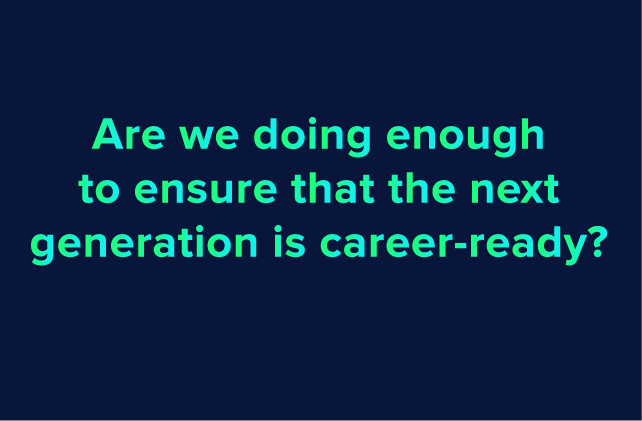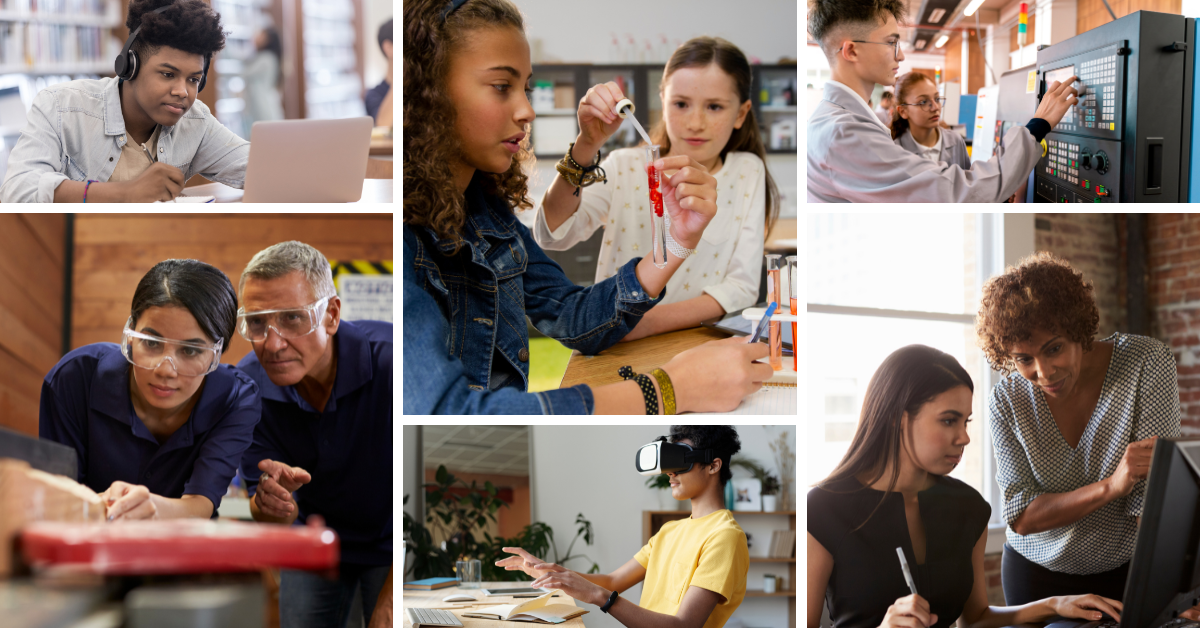It’s estimated that Gen Z will comprise about 30% of the workforce by 2030. Are we doing enough to ensure that the next generation is career-ready?
What can we, as caring adults, do to ensure that we’re setting young people up for success? And how do these considerations change specifically for female-identifying youth?
While in-class programming can provide part of the solution, another piece of the puzzle lies in the programs we’re providing to young people beyond the classroom.
In July of this year, we released Preparing Youth for the Workforce: Teen & Young Adult Career Readiness Programs at Big Sister Association of Greater Boston, a toolkit in collaboration with the Big Sister Association of Greater Boston that centered on strategies for effective career-readiness initiatives for out-of-school time. While the toolkit focused on programs for girls and young women, using Big Sister Boston’s “Our Big Futures” program as a framework, many of the findings are applicable to any youth-serving organization.
With the release of this toolkit, ASA hosted two virtual panel discussions focused on preparing the next generation of female-identifying youth for careers that suit their passions, talents, and abilities:
Panel 1: Preparing Youth for the Future: Strategies for Building Out-of-School Time Career Readiness Programs (July 21, 2022)
- Moderated by: Ashley Hemmy, ASA
- Panelists:
- Ariel Fitzhugh, Big Sister Association of Greater Boston
- Jillian Luchner, Afterschool Alliance
- Charline Alexandre-Joseph, MENTOR National
- Dr. Polly Johnson, Boys & Girls Clubs of Tennessee Valley
Panel 2: Guiding Female-Identifying Youth on the Path to Education and Career: Gender-Intentional Mentoring Strategies (August 18, 2022)
- Moderated by: Jing Cox-Orrell, ASA
- Panelists:
- Clauder Aspilaire, Chica Project
- Letta Neely, Apprentice Learning
- Ariel Fitzhugh, Big Sister Association of Greater Boston
- Lyn Swackhamer, National Center for Women & IT University Colorado Boulder
- Valeria Cardoza, Big Sister Association of Greater Boston (High School Student)
Across these two panels, we gained some great insight into how different organizations are using out-of-school time to prepare young people for the future. Here are our key takeaways:
- It’s more important than ever to provide career readiness tools and resources to young people – particularly female-identifying youth – in order to increase equitable opportunity in the workforce.
That includes increasing access to mentorship and social capital. Ariel described BSAGB’s “Our Big Futures” program as a career readiness program that supports their “little sisters,” aged 14-24, by providing mentors and individualized coaching in which they set concrete goals, and then connect them to resources and opportunities that align with those goals and move them closer to financial independence. This initiative, she said, was born out of a clear need she saw among the “little sisters,” who were asking for help navigating potential career paths.
Charline added that MENTOR’s philosophy lies in the idea that “potential is equally distributed, but opportunity is not.” A major driver of healthy development is who you know and who’s in your corner, she continued. MENTOR does this by partnering with employers and caring adults to work with young people to obtain and maintain employment, and ensuring that these adults are well-prepared to support young people in finding their paths.
Clauder recounted her own experience in not seeing herself represented in workplaces—and it wasn’t until she met her mentor that she truly felt empowered to take the next step and complete her master’s degree to advance her career. The Chica Project, she says, is what she wishes she had as a little girl, as they provide mentorship opportunities for young Black and brown women like herself.
- In order to truly set young people up for success, we must look to solutions that maximize students’ time out of school.
Jillian explained that at Afterschool Alliance, they recognized a need to look beyond the classroom for career readiness programming. “80% of the time [kids] spend over the course of their year is in out-of-school spaces,” she said.
Young people who participate in programs beyond the classroom have measurable benefits, such as interacting with peers and gaining social skills, getting help with homework, taking part in physical activities, building life skills, engaging in STEM learning, and receiving healthy snacks or meals.
“We need to create spaces for youth to just be,” Ariel said. She recounted a moment in which the “little sisters” were given the chance to choose what they wanted to do, and they chose to play Monopoly. This, she said, was such a simple yet effective way to get them talking and engaging with each other in a way that traditional learning settings often couldn’t replicate, which was a major learning experience for her.
Letta explained the approach that Apprentice Learning takes in providing work-based learning experiences for students during the summers, starting in middle school. They pair young people with industry to develop essential workforce skills and get them thinking about what paths they may want to take after they graduate high school
- If you want an out-of-school career readiness program to succeed, place youth voices at the center.
Charline and Polly agreed that in order for career readiness programs to be effective, they must put students at the center and truly listen to what they need. “We try to have our kids direct the types of technical training camps that we offer. In addition to that, we allow them to have a voice in their internship placements. They’re more likely to participate and engage because it’s something they’re interested in, and they’re able to provide feedback,” said Polly.
Empowering young people to actively make decisions about the programs in which they participate is a critical component, particularly since Gen Z values their agency more than any preceding generation. Allowing young people to advocate for themselves also requires us, as caring adults, to instill the confidence in them to do so, as Ariel elaborated. That means that students need someone there to support them through the process.
Letta agreed, adding that allowing students to self-identify their desired paths places them “at the edge of their comfort zone and into their courage zone.”
- There is a strong social justice component to increasing access to career readiness learning. This is especially important for female-identifying youth in underserved communities.
According to Jillian, 25 million students across the United States want to participate in after-school programs, but many of them lack access to such programs due to affordability, availability, and transportation barriers. These roadblocks must be considered when implementing career learning initiatives.
Dr. Johnson said that the Boys & Girls Clubs of the Tennessee Valley prioritizes paid internship opportunities, which is especially important for underserved communities. They also prioritize financial literacy and ensuring that young people have access to transportation and placing these paid internships in communities with access to public transit.
Lyn, whose organization works more heavily on the research side, explained that while women make up 57% of jobs in the U.S. workforce, only 26% of computing roles are held by women. This indicates a stark contrast in gender equity and leadership opportunities.
Seventeen-year-old high school student Valeria explained that as a disabled person, she has faced many barriers throughout her life—but participating in Big Sister’s “Our Big Futures” program helped her to realize her potential by relating to a mentor on a deeper level.
- Funding for career readiness initiatives can come from a variety of sources, from federal to local.
The federal government has a number of potential funding initiatives, such as ESEA (Elementary and Secondary Education Act) legislation, Career and Tech Education (CTE), Higher Education Act (HEA), Juvenile Justice and Mentoring, and more. State governments are using lottery funds and cannabis taxes, among other things, to fund these initiatives. Local governments have Community Services Block Grants as well as Mayor’s Initiatives and Task Forces. At the program level, local businesses and philanthropic organizations may be willing and able to provide funding.
If your organization is looking to fund career readiness programming, explore what options you might have from various levels of government as well as from the local communities in which your organization operates.
If you work for a youth-serving organization, what are some strategies you use to implement career readiness learning?
For more on the future of career readiness learning for kids, subscribe to our thought leadership newsletter PivotED.





